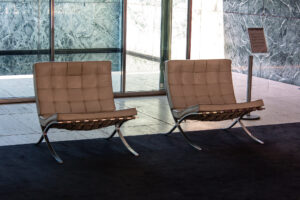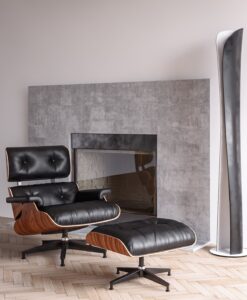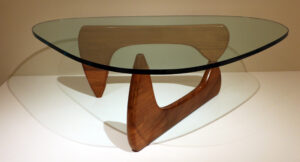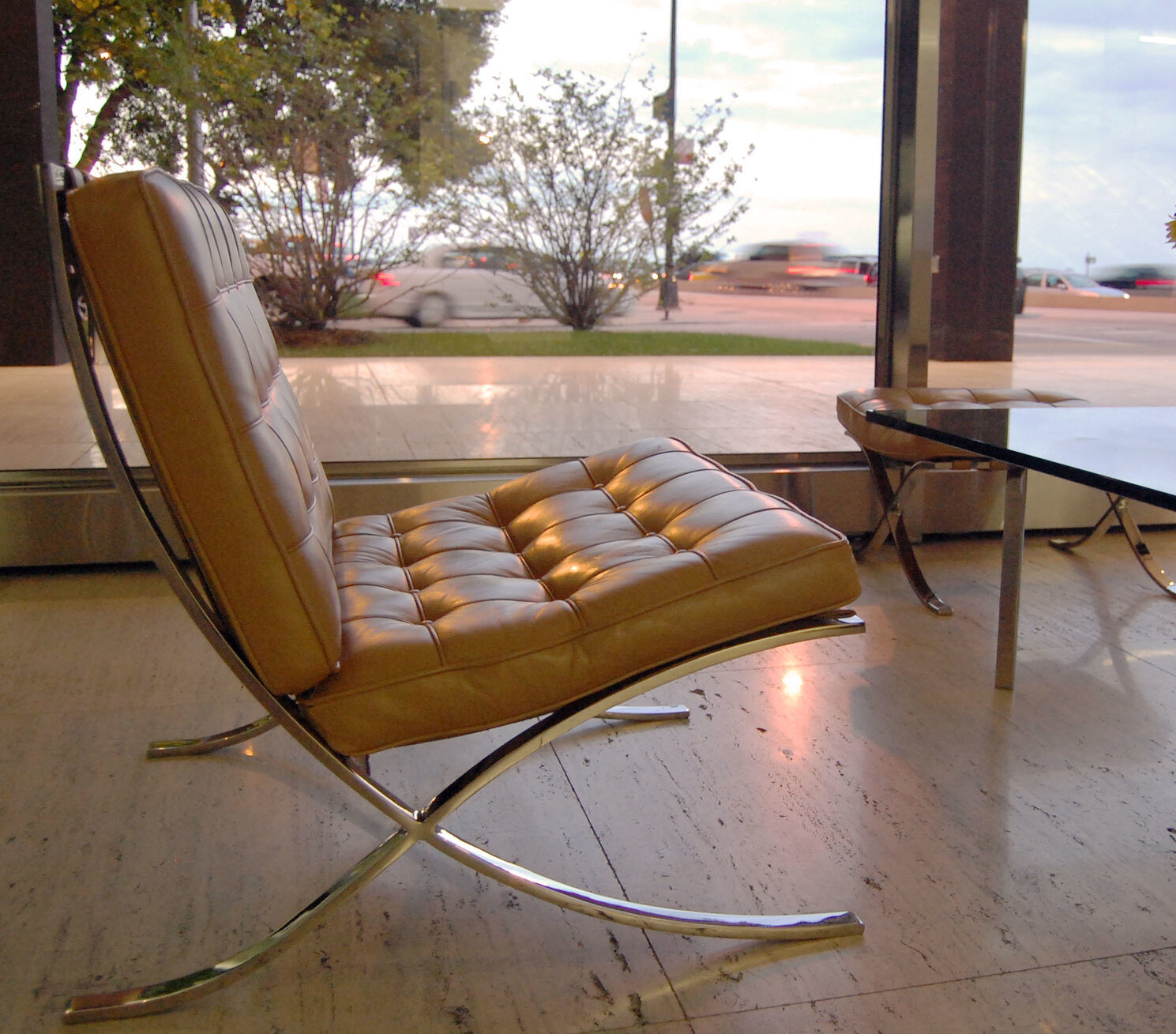The modernist architecture movement gained traction in the late 19th century and was influenced by the post-war notion of practicality and eliminating excess.
Notable modernist architects include Ludwig Mies van der Rohe, Frank Gehry, and Zaha Hadid. Along with designing structures, these architects also designed furniture that would harmonize with their buildings, while making their works more accessible to many.
Prior to the modernist movement, furniture was seen as ornamentation. Rather than taking comfort and practicality into consideration, the value of furniture was determined by the amount of time and level of craftsmanship that went into its production. The Industrial Revolution enabled the mechanization of furniture production, enabling furniture to become affordable and functional rather than ornaments reserved for the wealthy.
Modernist principles of furniture considered the interaction of the design and the user, creating designs that fit with the human form rather than forcing bodies to conform to the furniture.

Ludwig Mies van der Rohe’s 1929 Barcelona Chair was inspired by the simplicity of ancient folding chairs. Supported on each side by two chrome-plated flat steel bars, the Barcelona Chair is upholstered in leather and combines simple elegance with comfort. Mies van der Rohe designed the Barcelona chair to sit in the lobbies of his buildings, where they accent the architecture and blend in with the surrounding space.

The Eames Lounge Chair, another iconic piece of modernist furniture, was released in 1956 and designed by Charles and Ray Eames. The Eames Lounge Chair is a rare example of modernist furniture that was not designed to be mass-produced and affordable. Yet, the chair still relied on the principles of simplicity, practicality, and comfort core to modernist furniture design. The chair, inspired by the English Club Chair, is composed of molded plywood and leather and became a cultural icon for its un-design-like appearance that invites sitters to rest for hours within the chair’s leather cushions.

Japanese-American artist and industrial designer, Isamu Noguchi, designed the famed Noguchi Table for the furniture company, Herman Miller. The Noguchi Table is a sleek glass-topped table supported by two curved pieces of wood at the base. The table became popular for its ability to fit both in the domestic and corporate spaces.
The ability for modernist furniture to fit effortlessly into any space combined with its practicality made modernist designs into classic pieces recognized across generations. Modernist furniture can be found in suburban households and steel office buildings alike. Families gather around Noguchi Tables for chess games and curl up into Eames Lounge Chairs with long novels. Business moguls and architects meet in Barcelona Chairs and sign documents over Noguchi Tables. The versatility of modernist furniture and ease with which it is produced revolutionized how the general public views furniture and furniture’s place in the spaces it takes up.

